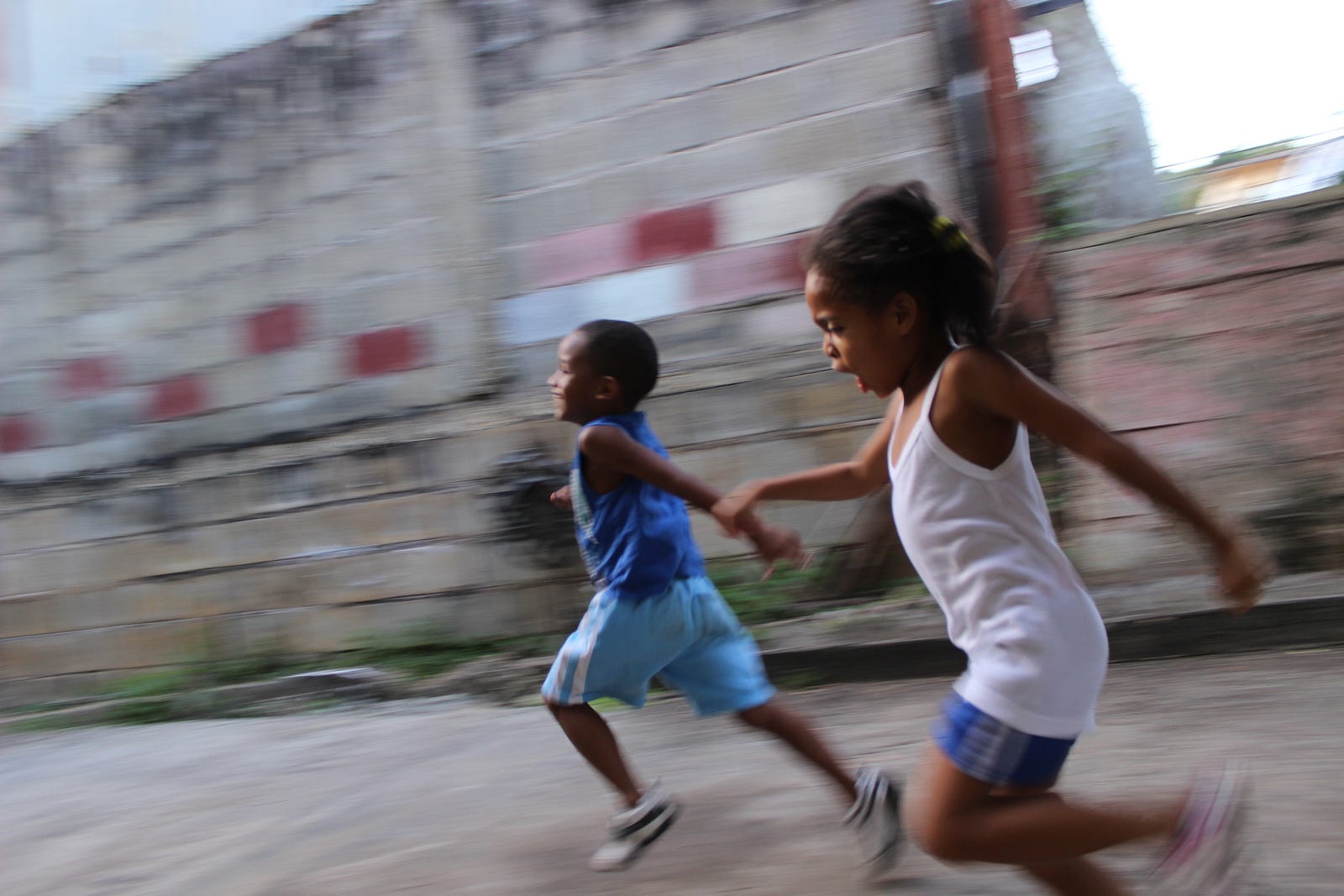Competitiveness, Commitment and Camaraderie.

I probably watch too much sport, I love playing it too. Whatever sport it is I’ll find something in it that appeals to me. Sport has given me so much. It has shown me so much about myself and, more importantly to leadership, the capacity of every type of human when they are in the right environment.
I have seen people with demure dispositions and lightning in their eyes. I’ve watched mean-looking giants act with a heart of kindness. I’ve seen good people do bad things and people with questionable values make sacrifices that are beyond belief.
It is in these contrasting moments, the uplifting narratives, the continuously inspiring moments, and the adversities that are overcome that make Sport so much more than a game. People compete for these moments, others watch for them. But, this is why
Sport is soup for the soul, a nourishment of energy with heartbreak, effort with patience, winning with learning.
The regular tribute and impact videos following the death of Kobe Bryant have impacted me in the same way. Kobe embodied the 3 C’s of Sport and Leadership; Competitiveness, Commitment and Camaraderie.

Competitiveness
People that know me often say that I can be competitive, but most of them temper it with affection.
I know I am competitive.
I also know that I approach it from a place of humility. I do not want people to go easy on me, I want to be challenged, because I want to improve. For this reason, I will continue to compete with those around me, but they will know that I care about them, I only want them to challenge their beliefs about themselves.
“The principle is competing against yourself. It’s about self-improvement, about being better than you were the day before.”– Steve Young, San Francisco 49’ers Quarterback
Everyone is competitive, but many people have had it repressed or beaten out of them.
If you watch young children, they will race everywhere. Beautifully, breathless, smiling and racing. At some point, as you grow older, you begin to believe that if you can’t win you shouldn’t try.
There is no need to risk the discomfort and shame of trying hard and not being good enough. Your competitive switch gets damaged, it is now no longer on or off, it is off and only on when you are in with your trusted people, where you can be unguarded.
What sport teaches is that you cannot win all the time. Even if you are the most competitive person in the world. However, sometimes winning is not the real objective. Most of the time it is not.
Define your win, not by beating someone else, but by improving yourself.
This is the ultimate form of competitiveness, competing against the previous version of yourself. Looked at in this way there are no failures. Only more opportunities for improvement.
Competitiveness as a Leader
I am a leader who wants people to continuously grow, steadily improve. I can create this with a competitive environment. This environment is not competing against each other, or other departments, but competing with the previous version of themselves.
If you are a leader where your team competes against each other adversarially, then you will create an environment that is caustic and disheartening. This may earn you some short term gains in output, but you will lose in the long run.
If they compete, and you support them, then they can grow. Their growth is always a success. In competing and striving against themselves there is a tension you need to manage. One of improvement and support. You do not want to create tension between team members.
“It’s not about winning or losing a competition, it’s about beating the doubt from within yourself and knowing at the end of each day you are one step closer to your goals.” — Jonathan Horton, two-time US olympic gymnast
How to create it
The simplest way to engender positive competitiveness is to gamify your targets. Let your staff ‘level-up’. Identify attributes and scores and let them compete against themselves to continuously improve.
Habatica has created an online goal and gamification to allow you to create and track goals and levels. You can do something similar with your team.
To get them to do it, you need to start. The best part of this is some of your metrics can be scored by your team. This can create a positive team dynamic. Importantly, your team needs to know that you care about them. This is a tension you need to balance if you want to be a great leader.

Commitment
There are two definitions I use for commitment within sport; the first is found in developing a commitment to improvement in the pursuit of excellence. The second is in those final moments before you do something hard or scary. That moment where you have to either commit everything or pull back, give it all or offer something less.
Brian Meeker (or Rick Disneck for those of you who lived in Australia in the 90s) missed his take-off jump during the 1981 US National Sports Festival and in doing so took himself into sporting immortality.
Running in to do a vault is one of those moments where you get the chance to not commit 100%. You can see from the above GIF that Brian was committed, and missed his take-off jump.
The most impressive aspect of this was that Brian continued to compete, and continued to do the vault. Eventually qualifying for the US National Team after recording a record vault in the Pac-10 conference finals. Brian had a choice to back-off his commitment in those moments just before he launched. But he did not.
You own each of these choices. I have seen them manifest when watching different sports. I have felt them in myself. Each breach in commitment leaves me with a sour feeling, with regret;
Nobody who ever gave his best regretted it — George Halas, Chicago Bears Coach and Owner.
It is backing off in those moments, where you choose to do something that sabotages your best and feel regret. That regret can last a lifetime. The thing with committing yourself, to your team, to your competition is that it is binding. An oath between your intent and your best output.
“There are only two options regarding commitment. You’re either IN or you’re OUT. There is no such thing as life in-between.” — Pat Riley, Los Angeles Lakers Head Coach
Commitment and Leadership
If you are a leader, finding commitment within your team is important to success. That slow-burning desire for continual improvement takes a culture of commitment. It takes patience, resilience and strong character when navigating the obstacles along the way. Because there are always obstacles.
As Intel visionary Andy Grove says,
Bad companies are destroyed by crisis, Good companies survive them, Great companies are improved by them
What great companies have to get them through a crisis and improve, is a culture of commitment to learning from every attempt. They understand that in the difficult moments, there are times when you need to not back off, not pull-out, you need to commit to doing the hard things.
As a leader, you have to hold this commitment to your team. They need to know that you care about them, but that you are committed to individual and team success. You will learn from every moment, and as long as they are committed to learning too, they will not shoulder the blame.
“It’s not the will to win that matters — everyone has that. It’s the will to prepare to win that matters.”– Paul “Bear” Bryant
How to create it
Find the things your team is prepared to suffer through because they know the outcome is worth it. Hone their commitment to each other through this. Identify how you can harness this willingness and establish your commitment to success by doing the hard things when they need to be done.
By completing a DiSC Profile together you can understand how to best use the strengths of, and communicate with your team. You can then create a commitment to following through on it.
This is a start. The next time will be to use those strengths and communication skills to get through your teams next big adversity.

Camaraderie
For me, this is glue of sport. This is the thing that provides the most value from any endeavour. The camaraderie of a team, of an athlete and their trainer, of a team and their supporters. This is the most uplifting and enthralling aspect of any sport.
The connection, established in times of shared hardship and cemented in the throes of celebration, are forever.
The Military relies on this, the best teams know this. All military initial training and most pre-season training camps for teams are focused on it. You need to know this. I mentioned before the value you can extract from a crisis. This is one of those things; shared hardships overcome.
The reliance on each other to succeed and deeply knowing that to be true is so powerful. Placing your success in the hands of another takes bravery and trust. Watching that return to you magnified is uplifting.
Most talented players don’t always succeed. Some don’t even make the team. It’s more what’s inside. — Brett Favre, Green Bay Packers Quarterback
Camaraderie and Leadership
This is the part of Leadership that is often overlooked. Leaders are known to give emotive speeches, they set compelling objectives and they empower their staff. They expect doing these things will build a fantastic team and it will be enough.
But it takes real effort to build camaraderie in teams. You need to create an identity through language. You need to create a team dynamic through action. Finally, you need to create camaraderie through striving in adversity.
The best leaders know the importance of identity. If your team can identify as a success in the face of adversity group, they can surpass all your expectations.
If you create a team with camaraderie, who know the strengths and weaknesses of their team without blame or grudge. Who trust each other to deliver when it counts. You can create a team capable of greatness.
How to create it
Get. Out. Of. The. Office.
If you work in an office environment, you need to get out and do something that requires teamwork. You need to flex a different muscle, together. In these excursions, you need to work together to succeed. The rise of the Escape Room is a perfect example of the type of activity you should look for.
If you don’t have the budget for that, you can do a team-building day, one that doesn’t absolutely suck. You’ll know if you have succeeded if there is some team-centric banter. Something that has materialised during these camaraderie building sessions.
Not surprisingly, I have found that sports are a good way of creating this. Games like netball, ultimate frisbee, indoor soccer are accessible sports for most. You can even play darts or do board games, but make it interesting.

Competitiveness, Commitment and Camaraderie
These three attributes that are so often manifested through sport, are key attributes to being a great leader of a high-performing team. There are a few ways you can become a truly great leader.
You need to balance the tension between genuine care and challenge. You need to remember your commitments to the team and foster commitment in them. You need to create a lingo native to your team and let them strive through adversity.
If these three C’s can be created in your team you can establish the foundation for continued success. Your job as the leader is to be purposeful in creating it.
If you can create a feeling through language, then accompany it with an action in that direction — that is cultural change
I love to see people succeed. I write sparks, the small idea and strategies that can create a blaze in someone else’s soul. You can reach me through my website leonpurton.com.

Great content! Super high-quality! Keep it up! 🙂